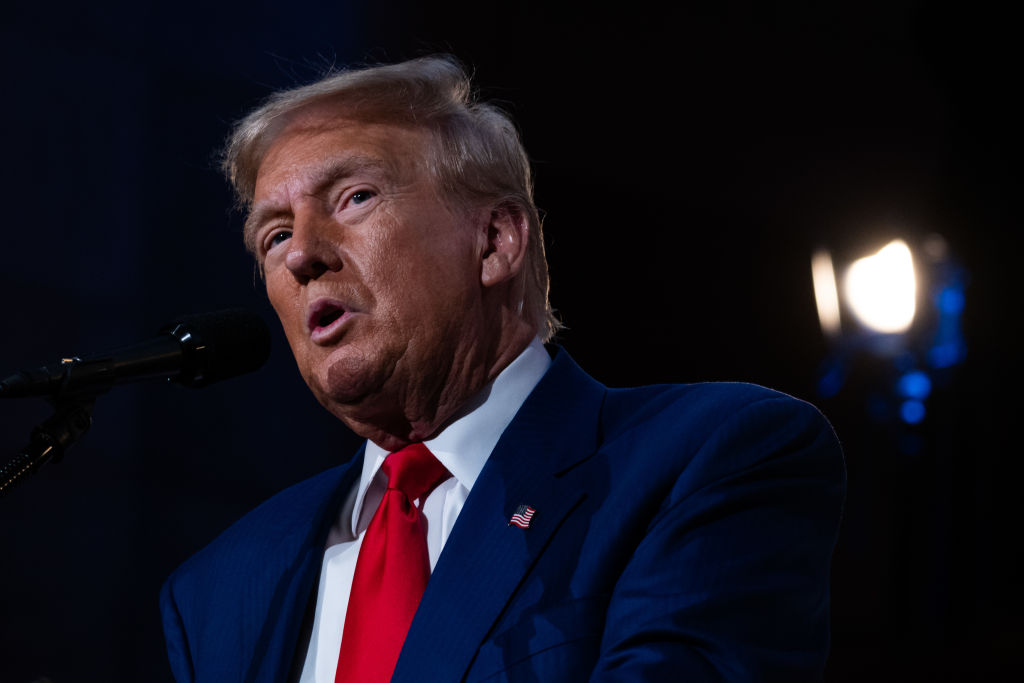A Preview of the Fed Under Trump
John Taylor, a former Treasury official in the Bush administration, is a top candidate to replace Fed chair Janet Yellen.

Donald Trump’s surprise victory may radically alter the future path of U.S. monetary policy. Yields on long-term Treasury bonds have jumped by more than one-half percentage point since the election. In addition, the markets are pricing in possibly two or three interest rate hikes by the Federal Reserve in 2017.
Although Trump was an early supporter of Fed chair Janet Yellen (likely because real estate developers love low interest rates), he turned critical in the latter stages of the campaign and adopt-ed the Republican line that the Fed’s low-rate policy had distorted financial markets. Trump suggested that Yellen, a Democrat, had kept rates low to help the campaign of Hillary Clinton.But President Trump will not have to suffer Yellen’s chairmanship for long. Her term ends by February 2018, and vice chairman Stanley Fischer’s term ends about four months later. Plus, two of the seven seats on the Board of Governors are now vacant, ready for Trump’s choices. Those choices are important because all seven Fed board members (along with a rotating group of five regional bank presidents) vote on the Federal Open Market Committee, which dictates the Fed’s interest rate policy (see Why Interest Rates Matter).
I believe that John Taylor, a Stanford professor and former undersecretary of the Treasury in the George W. Bush administration, is a leading candidate to take over the chairmanship from Janet Yellen. Taylor is the author of the so-called Taylor Rule, which specifies how the Fed should set short-term interest rate targets depending on the levels of inflation and unemployment. In recent years, the Taylor Rule has called for higher targets than the Fed has set. Republicans critical of the low-interest-rate policy have introduced legislation that requires the Fed to take the Taylor Rule into account in its policy discussions.

Sign up for Kiplinger’s Free E-Newsletters
Profit and prosper with the best of expert advice on investing, taxes, retirement, personal finance and more - straight to your e-mail.
Profit and prosper with the best of expert advice - straight to your e-mail.
The Fed has fiercely resisted this legislation, maintaining that such congressional intrusion into Fed policymaking undermines the independence of the central bank. I have said that application of the Taylor Rule depends on what the Fed believes is the correct “neutral” rate of interest (the rate at which the Fed is neither stimulating nor restricting the economy). As I’ve noted in past columns, there is clear evidence that this rate has fallen substantially in recent years. That means Fed monetary policy is nowhere near as easy as many Republicans believe. Clearly, if Taylor is nominated as chairman, his rule will become front and center.
A change in plans? But Trump and the Republicans may have to change their tune if they want to go through with the tax cuts and infrastructure expenditures Trump has proposed. A number of economic analysts estimate that the tax cuts and infrastructure programs could add $10 trillion to the national debt in the next 10 years. Not only would that pressure the bond market, but faster economic growth and higher inflation should also boost bond yields. Six months from now, Trump might need a chairman who supports lower rates, not a hawk like John Taylor, who has pushed for higher rate targets.
Whoever Trump chooses for the Fed, the Republicans control both Congress and the presidency for the first time since the George W. Bush administration. Markets now see more expansionary fiscal policy and capital-friendly tax cuts than would have occurred if Clinton had been elected. As a result, sentiment is changing in favor of stocks and away from defensive positions in Treasuries.
Those developments should be very favorable for stock investors. Higher interest rates should be more than offset by higher corporate profits, sending stock prices higher. If Trump’s policies of tax reductions and less regulation go into effect, stocks—not bonds—are the place to be.
Get Kiplinger Today newsletter — free
Profit and prosper with the best of Kiplinger's advice on investing, taxes, retirement, personal finance and much more. Delivered daily. Enter your email in the box and click Sign Me Up.

-
 Two Don'ts and Four Dos During Trump's Trade War
Two Don'ts and Four Dos During Trump's Trade WarThe financial rules have changed now that tariffs have disrupted the markets and created economic uncertainty. What can you do? (And what shouldn't you do?)
By Maggie Kulyk, CRPC®, CSRIC™
-
 I'm Single, With No Kids: Why Do I Need an Estate Plan?
I'm Single, With No Kids: Why Do I Need an Estate Plan?Unless you have a plan in place, guess who might be making all the decisions about your prized possessions, or even your health care: a court.
By Cynthia Pruemm, Investment Adviser Representative
-
 The Economic Impact of the US-China Trade War
The Economic Impact of the US-China Trade WarThe Letter The US-China trade war will impact US consumers and business. The decoupling process could be messy.
By David Payne
-
 What DOGE is Doing Now
What DOGE is Doing NowThe Kiplinger Letter As Musk's DOGE pursues its ambitious agenda, uncertainty and legal challenges are mounting — causing frustration for Trump.
By Matthew Housiaux
-
 A Move Away From Free Trade
A Move Away From Free TradeThe Letter President Trump says long-term gain will be worth short-term pain, but the pain could be significant this year.
By David Payne
-
 Trump’s Whirlwind Month of Crypto Moves
Trump’s Whirlwind Month of Crypto MovesThe Kiplinger Letter The Trump administration wants to strengthen U.S. leadership in the cryptocurrency industry by providing regulatory clarity.
By Rodrigo Sermeño
-
 What Could Derail the Economy This Year?
What Could Derail the Economy This Year?The Letter While the outlook for the U.S. economy is mostly favorable, there are plenty of risks that bear watching.
By David Payne
-
 Three Ways President Trump Could Impact the Economy
Three Ways President Trump Could Impact the EconomyThe Letter Some of Trump's top priorities could boost economic growth, but others risk fueling inflation.
By David Payne
-
 10 Predictions for 2025 from The Kiplinger Letter
10 Predictions for 2025 from The Kiplinger LetterThe Kiplinger Letter As 2025 arrives, here are our top 10 forecasts for the new year.
By Letter Editors
-
 Europe Faces Economic and Political Headwinds Next Year
Europe Faces Economic and Political Headwinds Next YearThe Letter Challenges for Europe: Potential tariffs, high energy prices and more competition from China will weigh on the bloc in 2025.
By Rodrigo Sermeño